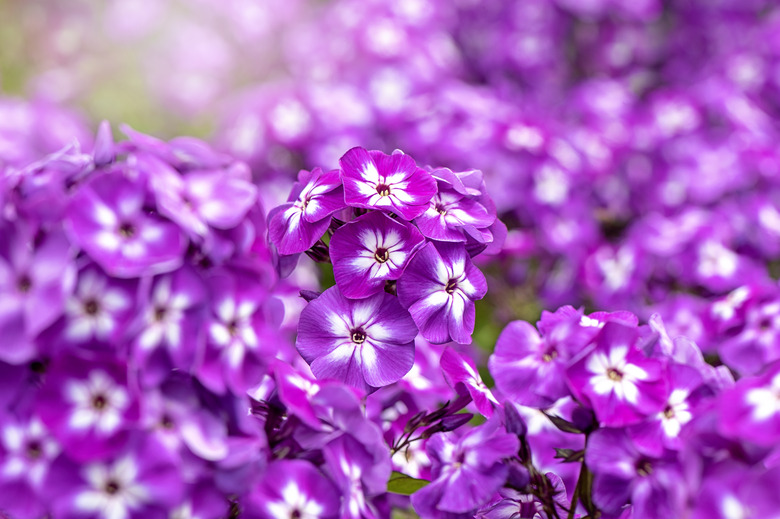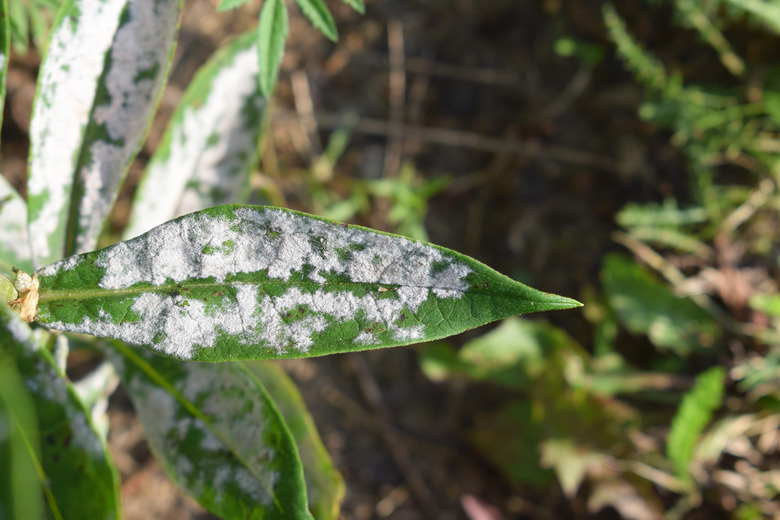Problems With Garden Phlox
Garden phlox, or Phlox paniculata, is a perennial in USDA plant hardiness zones 4 through 8 that blooms in late summer and comes in a variety of colors. Many garden phlox problems can be minimized or eliminated entirely by growing disease-resistant cultivars and providing plants with the care they need. Choose a full-sun location on well-draining soil, and fertilize in early spring with a low-nitrogen fertilizer. As with most plants, early symptoms of garden phlox pests and diseases are problems to watch for so you'll be able to treat them early before they spread.
Garden Phlox Pests and Diseases
The North Carolina State Extension notes that phlox plants are susceptible to a host of disease and pest problems, including:
Powdery Mildew Fungal Disease
Powdery mildew is a destructive fungal disease that causes a powdery white growth on the tops of the leaves of the phlox plant. Once the growth occurs, it can quickly destroy any remaining green tissue and then move on to the flowers. The disease may start with white spots on phlox leaves but quickly progresses to cover the entire leaf.
Choosing disease-resistant cultivars to avoid this disease altogether is a better strategy than treating mildew on phlox after it occurs. The plants need plenty of air circulation and sun when planted. If powdery mildew does occur, spraying fungicides such as sulphur or chlorothalonil (sold under the brand name Daconil) at the earliest sign of infection can be effective.
The University of Illinois Extension recommends these mildew-resistant phlox cultivars:
- David (white flowers)
- Laura (purple flowers)
- Star Fire (red flowers)
Leaf Spot Disease
Symptoms develop with easily identifiable circular brown spots that have white to gray centers. Leaf spot starts on the lower leaves and moves up the stem. As the disease spreads, the resulting brown leaves on phlox plants curl up and then die.
The first defense is to keep the plants healthy by properly fertilizing and watering them. Water in the morning so the leaves have a chance to dry during the day. Remove affected leaves as soon as you notice leaf spot. As a preventive measure, apply a fungicide in the spring when new growth appears.
Phlox Plant Bug
This bug bites through the tender shoots and leaves of the phlox at the growing tip and sucks the sap. If bugs become abundant, spray commercial insecticides or insecticidal soaps to treat the problem. Common commercial brands include the chemicals acephate, azadirachtin, or imidacloprid as effective agents. Check with a local Cooperative Extension Service office or nursery before using any products, and follow all label recommendations.
Twospotted Spider Mite
Twospotted spider mites are the most serious of all phlox problems. These mites suck the liquids from phlox leaves, causing the leaves to turn yellow. Healthy plants are better able to tolerate mites, so make sure phlox is watered and fertilized adequately. An insecticidal soap spray may be fairly effective.
If the problem is more severe, use a miticide specifically for flowering perennials. Apply the spray very early in the day, when temperatures are cooler in the morning hours. Spraying during the heat of the day is likely to cause more plant damage.
Stalk Borer Moth Larvae
The wormlike larvae of the stalk borer tunnel up and down into the stems of a phlox plant. These pests usually go unnoticed until the plants begin to wilt. It's too late for the plant to recover at that point.
There is one annual generation with the moths emerging in September and October to lay eggs. The eggs can survive winter and hatch in May or early June. Stalk borers usually cannot be controlled once they have entered the plant. Systemic insecticides may be effective when applied in highly damaged areas, but control measures should concentrate on prevention.

